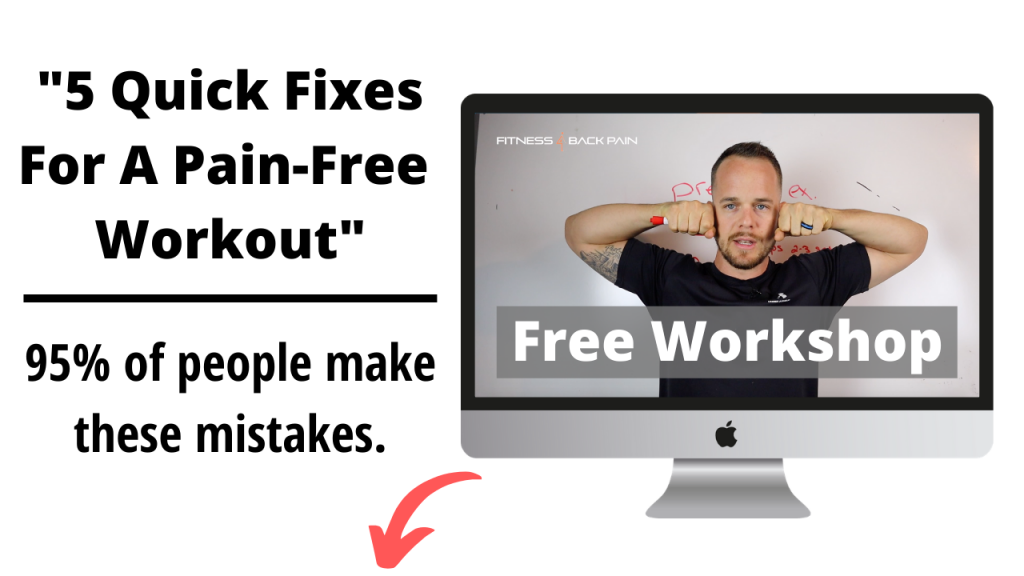We don’t really think about how our personalities can affect the way we recover or heal from injuries such as a broken leg or back pain. Some of us just do what the doctor tells us while others take things into their own hands and end up extending the healing process even further. Today I want to open up the type A vs type B personality traits and how BOTH can destroy your chances from seeing lasting back pain relief and what you can do to combat this issue.
I would consider myself a hybrid between the type A and type B. After reading through each characteristics I find myself both embracing parts of both types. After a thorough test, it was confirmed though that I favor the Type A. This got me thinking about the habits of typical Type A personalities vs Type B. I figured there has to be some kind of flaw in each that would prevent them from organically being able to master their relief plan. Not that one was better than the other but how could you improve both of these personality types recovery plan?
I want to briefly bring you up to speed on the specific characteristics of both Type A & Type B personalities.
Characteristics of type A and Type B Personalities.
You could be a Type A if:
- You have an exaggerated sense of time urgency. Always racing time. Feels like anything outside of what he/she needs to be doing is a waste of time.
- You are competitive
- Multitasker. We truly believe writing an email, printing a document and calling clients can be done at the same time.
- You have high level of stress: Over achieving usually leads to stress
- You think no one can do it better then you: Most Type A’s have perfected their trade or system so doing it different doesn’t make sense to them
- Are Impatient
- You are easily frustrated
- You are a perfectionists
- Your incompetence fuse is short
The problem with type A’s is they are intense, to-do list type people who push themselves hard to see their goals met. These types of people (*raises hand*) will push their backs too hard. Even during their recovery they will do more than they should thinking that more is better. These types of people usually see a slower healing process or go through multiple ups and downs due to jumping the gun with more advanced movements. This is me to the max! When I first started studying the McGill Method I was pushing myself with each exercises. I figured that as long as I was doing them with good form then I wasn’t making things worse. In reality there would be times where my back pain was caused by the same exercises that are supposed to be helping me. I want to teach you how not to make this same mistake!
You could be a Type B if:
- You tend to procrastinate: Most of your projects are done last minute
- You’re never really stressed
- Your schedule tends to be open and flexible: It’s usually not a problem changing your routine or system for someone else.
- Tend to be more emotional
- You typically can better handle one thing at a time
- You lack urgency: You don’t mind waiting or giving up your time for something less important
- You are creative
- Accomplishing something is more important to you than perfecting it.
The problem with type B’s is that they tend to be too laid back. They don’t see the urgency or the purpose in following a rigid schedule or program. If given a certain rep or set amount they will most likely do less for no real reason. These people need to make sure they stick to the plan. If it’s six reps you do six reps. If its once a day then you make sure you do it once a day. Nothing less!
Both Type A and Type B personalities have their strengths and weaknesses. When it comes to back pain, both personality types can go about it all wrong. In this case one personality type is not necessarily better than the other. What’s important is that both people learn to embrace there personality and make the changes necessary to see success with their back pain recovery plan.
I want to leave you with 3 mind sets that both personality types need to revisit daily.
1) The gym will always be there:
Getting back to your normal gym schedule is super important, I get it. What you have to remember is that just because you have to take 1,2 maybe even 3 months off from actually lifting weights or whatever it is you do thats fitness related. You’re not going to loose your strength, endurance or skill just from taking time off. Luckily, when it comes to rehabbing a bad back you can track and measure progress weekly just like anything else. As the weeks go by you should notice your ability to handle and manage different movements with little to no pain. Take note of these improvements and count them as wins. Only introduce new and more technical movements when the old ones can be done with zero pain.
2) Don’t limit your recovery time:
You can’t rush your recovery. I am the worst at this. Countless times over the past 2 years applying the McGill Method more and more into my daily life. I push myself looking to challenge what used to bring me pain. I tend to leave the gym frustrated and in more pain than I was before I went in. You have to literally be sold out for recovery and recovery only. You can’t continue to do the things that caused you pain even if it is a healthy active activity. If it causes you pain after doing it than guess what. Thats the exact thing that will hold you back from progressing and one day being pain free. You have a choice. Push through the pain and continue to do whatever it is that you do and just deal with the damage later in life or take the time off now and devote yourself to your recovery so that you can get back the things you love pain free.
3) Focus on what brings relief:
I can’t stress this enough. When it comes to working out we are taught to push through pain and that pain is weakness leaving the body. In some cases this is true but rehabbing a bad back is completely different. Pushing through pain and testing your limits is NOT what you want to do. Focus your efforts on the pain free movements and positions. Don’t push yourself too hard too fast with the basic recovery exercises such as the McGill Big 3. You’re looking for pain free movements. If that means your doing one set of each exercises for 6 reps then so be it. Don’t do more just because. Stick to that for a week and do it every day. Try for another set next week and as long as you can do them pain free then rock it out! Remember, progression is not about how much you can do or how long you can do it for. It’s how you can accomplish things pain free that once caused you pain.
Hope this helps guys. Keep these three mindsets close so you can revisit them when you get discouraged.
What are you doing now that seems to be causing you pain? Let me know in the comments below!
William




I started to get numbness and pain in my lower back, right Glute and left quad about 2 months ago… I pulled up (with my back) one of my wheelchair patients whose wheelchair was falling back and heard/felt a pop. I didn’t have any pain for the next 3 days so I continued to hit the gym pretty rigorously, I rowed, squared, ran, and everything and anything in between including lots of glutes. I felt sore so I wasn’t aware that I was just hurting myself even more until the lower back numbness 2 weeks later. I’ve been going to the chiropractor 2-3 times a week since, he says my right sacrum keeps getting locked and my left is hyperactive. He keeps putting it back in place but as the hours go by the thing just gets pulled into the wrong spot again. I finally decided to take matters into my own hands so I’m strengthening my ql and rest of core which I was neglecting in the first place. I think this problem has been a long time coming and is a representation of weak core, working on my quads and flutes too much, sleeping on my stomach and too much right side dominance. That being said, I love your website and got any tips for the likes of me?
Love to hear about readers taking charge of their recovery! Sorry to hear of your pain but you hit it right on the head. A lot of back issues are cumulative. Bad form/mechanics over and over and over will eventually break the area and/or body down. It’s never too late but as long as you respect the process and take your time you can get better.
I think the path your taking is spot on. I personally would take out repetitive flexion and loading of the spine for some time. The key is to allow the area to relax and adhere to your treatment. I have a similar issue with where my rupture is. Years of over extending and not bracing the core has made that area almost non responsive so my back constantly feels like it shifts if I do too much bending over or legs get worked to hard. It’s something that I will have to retrain but am confident it will continue to beocome less and less of a problem.
For you:
1) I would hit the couch stretch and smash the quads out with a ball or roller DAILY x2.
2) Start working in some side sleeping with a pillow between your legs.
3) Maybe experiment with some light body weight hamstring work to get the hamies firing (sounds like they could be weak with all the glute and quad work…?)
4) Stick to neutral spine work only. No twisting, leg raises, abmat work, toes to bar etc. All variations of planks, stir the pots, pallof presses and even before lal that leanring to master the McGill Crunch!
Keep me updated!
Thank you very much for your advise, I hope it will help me.
Thanks for reading Willy! Let me know if you have any questions